Muscles. Strategy. Sweat. Endurance. Fatigue. Blood. Tears. Bruises. Exhaustion. Callouses. Repetition. Discomfort. Criticism. Controversy. Coaching. Obsession. Collaboration. Equipment. Praise. Support. Practice. Perfection. Victory.
Am I describing art or sport?
When you break it down, the same timeless “no guts, no glory” attitude can be applied to both art and sport interchangeably.
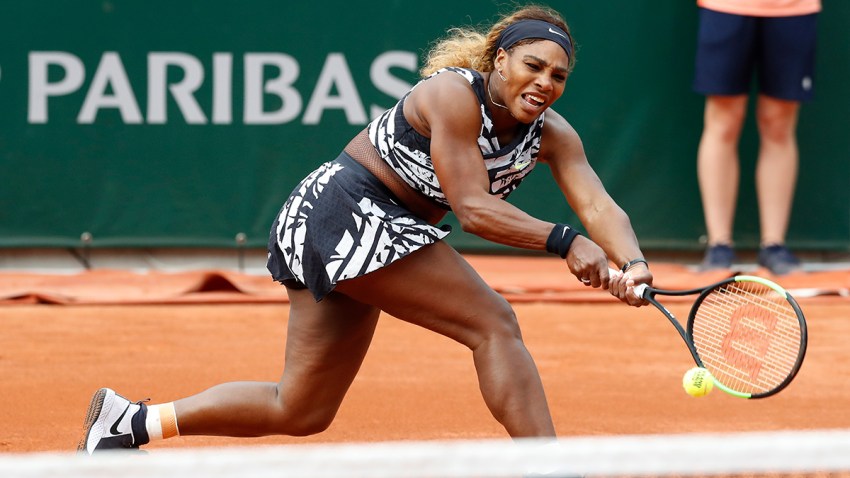 Serena Williams shows us time and time again what true grit looks like on and off the court
Serena Williams shows us time and time again what true grit looks like on and off the court
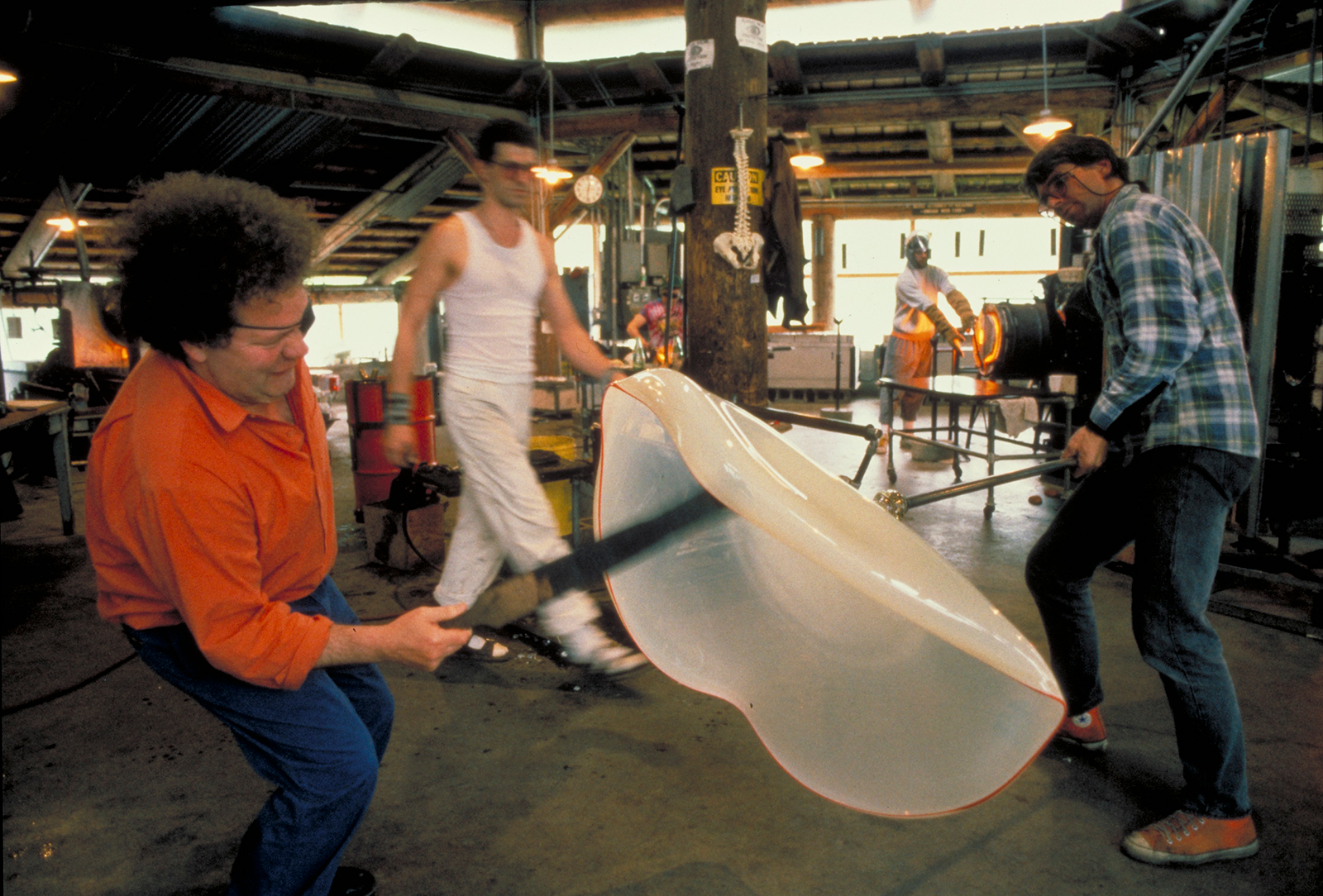 Dale Chihuly and his studio assistants prove that sweat, muscle, and collaboration are just as important for artists as they are for athletes. Learn more about the physical process of blowing glass with Chihuly HERE.
Dale Chihuly and his studio assistants prove that sweat, muscle, and collaboration are just as important for artists as they are for athletes. Learn more about the physical process of blowing glass with Chihuly HERE.
This week’s art exploration is less about the artwork or artists themselves, and more about the grueling physical and mental discipline required of artists to create and commit to their passion.
 Self portrait by Vincent Van Gogh (those moody blues get me every time)
Self portrait by Vincent Van Gogh (those moody blues get me every time)
Van Gogh, one of my ride-or-die artists, suffered from extreme bouts of depression, seeking treatment often but without much relief. Institutionalized for many years, yet producing some of his most profound work while in hospital, Van Gogh’s art served as both cure and cause of his instability. His prolific career resulted in numerous completed masterpieces, which are Vincent’s enduring gift to the world, however, the demons of his mental illness were relentless, ultimately claiming his life.
Passion works in funny ways. The intense need to create can be liberating for some and at the same time serve as a form of personal imprisonment for others. You’ve heard the term “tortured artist” all too many times. Perhaps that’s because sadly, many artists use benchmarks such as perfection, competition, and suffering to assess their success, which is not always a healthy road to walk.
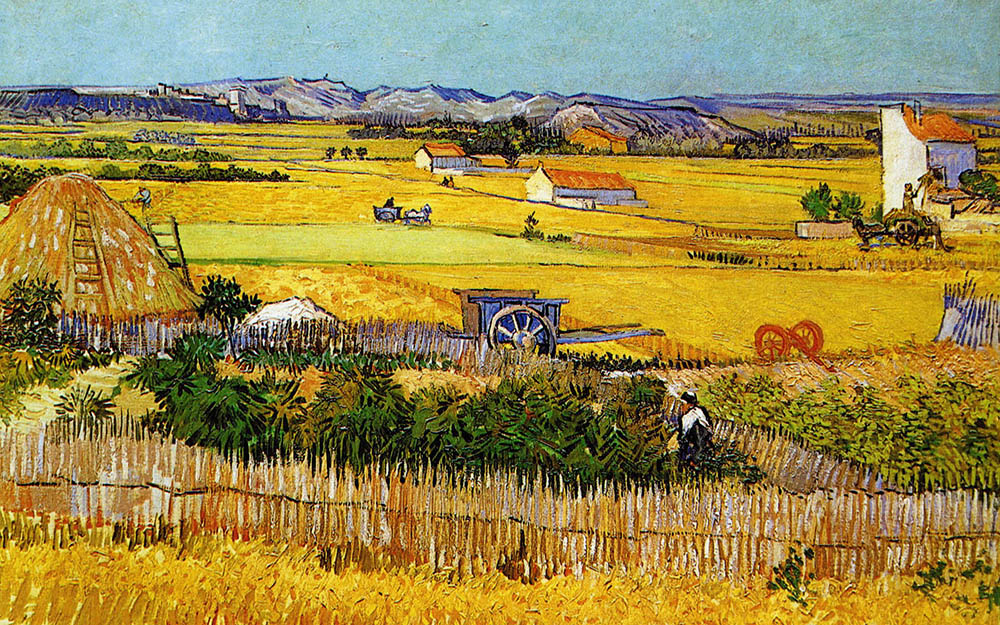
“This new crisis, my dear brother, came upon me in the fields, and when I was in the middle of painting on a windy day.” – Van Gogh writes to his brother, Theo, after falling ill once again, Saint-Rémy, 22 August 1889
Learn more about Van Gogh’s inner conflict between mental health and creative genius by visiting this amazing virtual resource about his time spent “On the Verge of Insanity” while living in the Arles Asylum.

Colin Kaepernick takes a knee during the singing of the National Anthem and receives harsh backlash from the NFL
For the sports fans among us, perhaps athlete Colin Kaepernick’s example of passion will resonate more with you. Over the past few years, Kaepernick has become known for his tough mental fortitude far more than any physical or athletic accomplishment earned during his time on the football field. As a free agent, Kaepernick still remains unsigned to an NFL team despite being in peak physical shape due to his controversial protest. He refused to stand during the National Anthem in a personal decision to take a firm stance against racial injustice in our country at the sake of his career. His peaceful protest has become a very poignant example of how an individual has made a personal sacrifice in the name of equality. His decision to forfeit his dream of being an NFL star has come at the cost of standing up for what he believes in. Kaepernick’s statement is a complicated example of passion turned sacrifice. His public personae forces the whole country to confront the issues of institutionalized racism, which is exactly what Kaepernick hopes we all do. What would you do if you were in his position?
Why does art, like sport, necessitate a strong physical or mental sacrifice in terms of achieving great success?
When you play sports do you play hard? For me personally, if there isn’t sweat or the opportunity to endure some kind of intense physical hardship in the process, I barely allow myself to consider what I did a workout. That probably makes me sound crazy, but in my opinion, the time and effort it takes to dedicate your body and mind to something like a hard workout, should result in something grand. Does that make me the kind of person who must witness a physical change in order to be convinced of the process taking place before me? Maybe it does. It definitely makes me someone you may not want to work out with, that’s for sure.
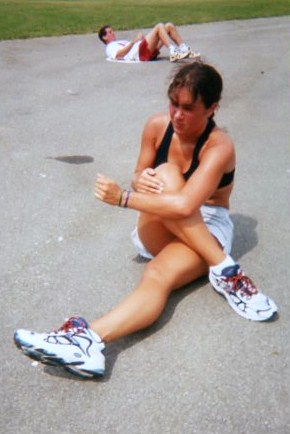 My dad and I gearing up to compete in our annual Triathlon tradition (swim, bike, run)
My dad and I gearing up to compete in our annual Triathlon tradition (swim, bike, run)
 Mr. Rogers and I complete the 13.1 mile Brooklyn Half Marathon together while representing with our Maury Running Club shirts!
Mr. Rogers and I complete the 13.1 mile Brooklyn Half Marathon together while representing with our Maury Running Club shirts!
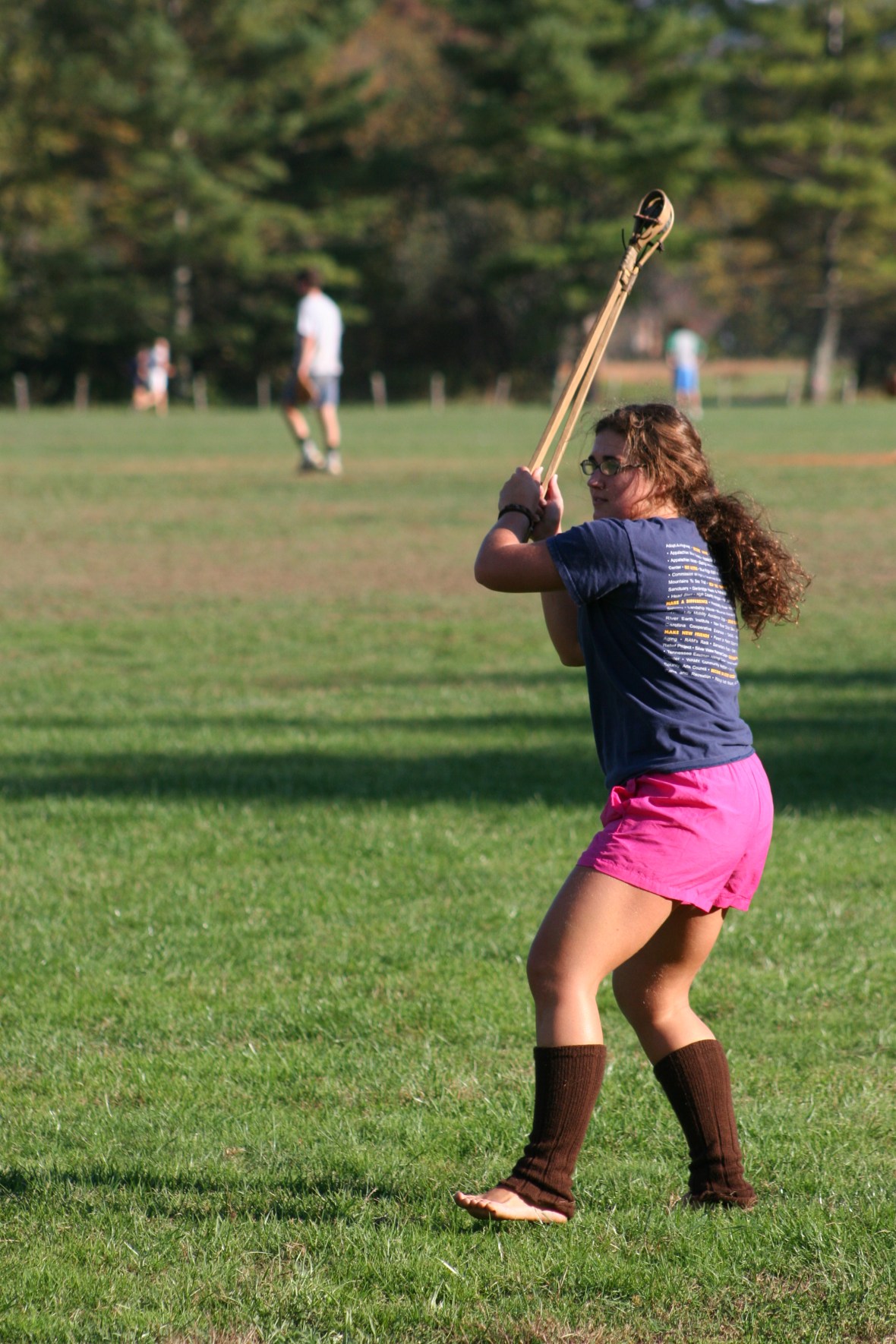 Ms. Bomba was a member of the Appalachian State University’s Toli Club, one of only two non-native teams to compete in the Native American stick ball game meaning Little Brother of War. The Mountaineers competed against tribes from Alabama and Georgia on fields spanning more than 300 yards. This game is a full contact sport with no pads or out of bounds. The goal is to throw the toa, a rock covered in animal hide, against a slender post to score. Historically, this game was played over several miles and settled over days of competition. Toli is a game requiring great speed, endurance, and strength.
Ms. Bomba was a member of the Appalachian State University’s Toli Club, one of only two non-native teams to compete in the Native American stick ball game meaning Little Brother of War. The Mountaineers competed against tribes from Alabama and Georgia on fields spanning more than 300 yards. This game is a full contact sport with no pads or out of bounds. The goal is to throw the toa, a rock covered in animal hide, against a slender post to score. Historically, this game was played over several miles and settled over days of competition. Toli is a game requiring great speed, endurance, and strength.
 Fun Fact: Ms. Bomba was a cheerleader throughout middle and high school. Here she is rocking bleached bangs in her Senior portrait. Whew. Throwback, indeed! Go Tigers!
Fun Fact: Ms. Bomba was a cheerleader throughout middle and high school. Here she is rocking bleached bangs in her Senior portrait. Whew. Throwback, indeed! Go Tigers!
Can you tell I’m not much for yoga, Zumba or walking? Even my long career as a cheerleader matches up with my need for extreme physical feedback when creating or doing anything. Anyone who wants to argue my point about cheerleading being a brutal sport clearly hasn’t watched the Netflix documentary series CHEER yet. Are we even in the middle of a quarantine if you haven’t made it to watching CHEER on your list of binge-worthy options?

Back to this week’s ESSENTIAL QUESTION:
Why does art, like sport, necessitate a strong physical or mental sacrifice in terms of achieving great success?
 Ballet dancers are known for disguising brutal physical pain and discomfort with grace, balance, and elegance. Their feet are the prime example.
Ballet dancers are known for disguising brutal physical pain and discomfort with grace, balance, and elegance. Their feet are the prime example.
Whenever I make art, I always gravitate towards processes requiring my physical involvement and the use of durable, textured media. Clay, wood, plaster, and earth are the first materials I look for when beginning a work of art. Carving, cutting, wedging, and burning are sensations that I seek out when creating. In college I built a ten foot tall structure from fallen trees and lit it on fire, documenting the process through photography. No matter the materials, or how you choose to use them, all serious artists, from watercolor painters to flutists, have a push and pull relationship with the creative process and what it takes to achieve greatness.
In order to acknowledge some of the personal struggles artists endure, I want you all to pay close attention to the physical and mental discomfort you experience while creating your art this week. Pay attention to how you feel when making art. What parts of the process do you enjoy? What makes creating art feel so awesome and also so frustrating at the same time? How does your body move to adapt to your work? What does your posture look like? How does your face look while working? Are you relaxed or tense? Worried or carefree?
Here are a few fun exercises to try in order to empathize with the mindset of some famous artists who are known for their extreme feelings, actions, and processes.
Lesson Extensions:

Option 1: Painting or drawing like Michelangelo from his Sistine Chapel scaffolding: It took Michelangelo four years to complete his indescribable masterpiece on the ceiling of the Sistine Chapel. There are many competing stories about how he actually accomplished this feat of mastery, but regardless, the man was suspended 44 feet above the ground, without air conditioning, on a wooden board, laying on his back, while producing some of the most technically proficient work of the high Renaissance or EVER.
Give it a try and gain HUGE admiration for the artist and his process. Build your own scaffolding with chairs, pillows, boxes, or whatever you can find. Suspend your canvas below your dining room table and attempt to complete a true work of art from start to finish in that position. Pay attention to how you will access your materials, how you will climb in and out of your set-up for breaks, how you will work through the discomfort of raising your hand above your head for so long, losing circulation to your fingers while the blood rushes to your head. Don’t forget to control your body from falling off your scaffold to the ground below!
Have your assistant (hi mom and dad) take pictures of you in your make-shift studio in the sky and show me what the work you created looks like when made laying on your back under harsh conditions, instead of from the comfort of your home studio. Don’t quit, even when it feels hard, discouraging or uncomfortable.
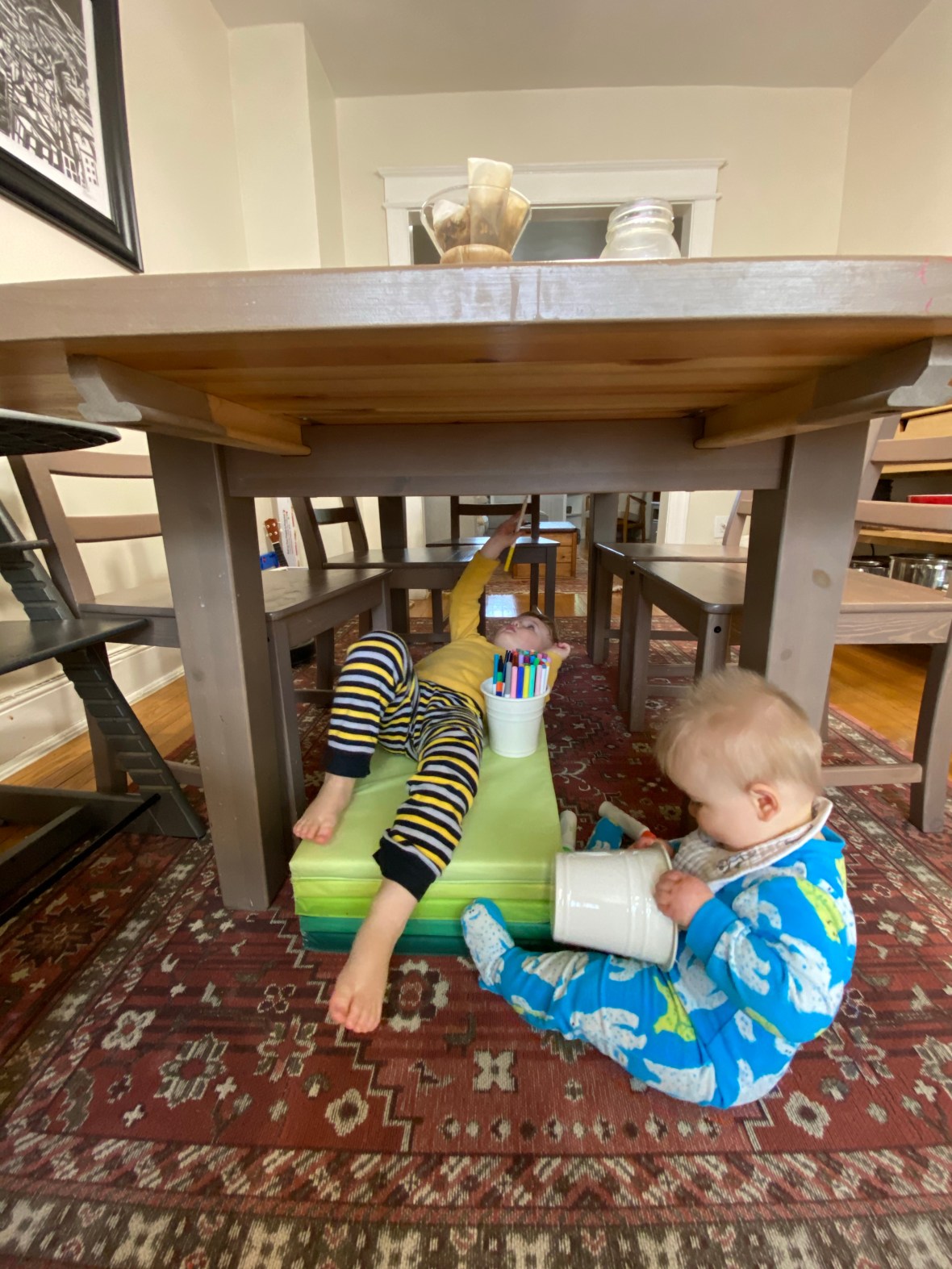

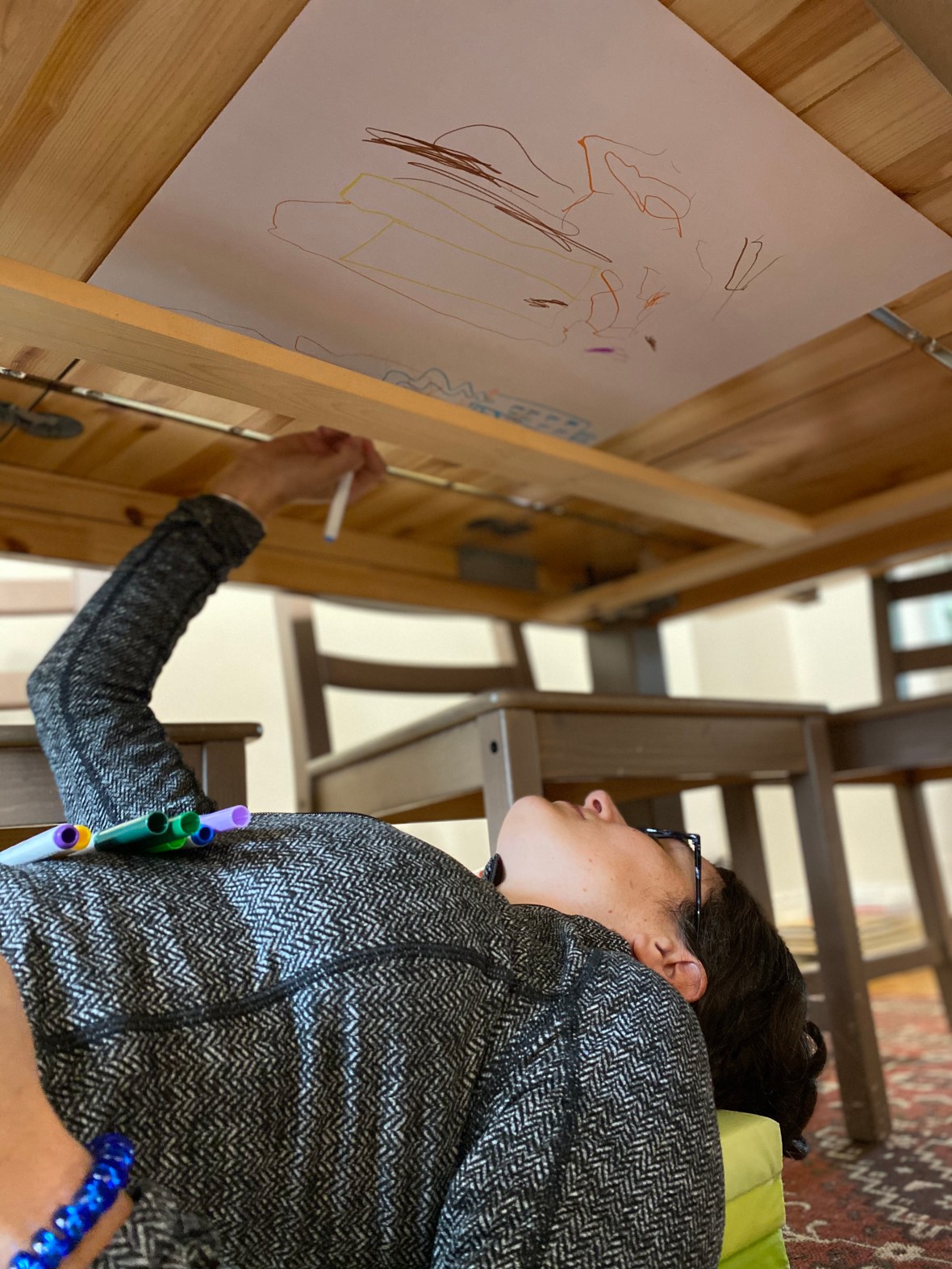

Oscar clearly had the wiggles during his attempt at painting his “city” from his scaffolding and his young assistant proved to be less than helpful.
Option 2: Endurance Art: Take performance artist, Marina Abramovic, as your example for how to create a shared emotional experience between artist and audience through a performance that requires focus and endurance. Abramovic’s career has spanned more than 40 years, but in 2010, her work of art entitled The Artist is Present, involved sitting across from total strangers for three months at MOMA for 8 hours a day without moving or speaking. People lined the streets of New York waiting hours and hours for their chance to participate in her groundbreaking art experiment. Abramovic devoted her time, body, and heart to creating this shared experience with her audience, one that was both emotionally and physically exhausting. She sacrificed comfort for art, and the world has her to thank for it.

https://www.youtube.com/watch?v=OS0Tg0IjCp4
Here is a video of Abramovic being surprised by her long-time collaborator, friend, and lover, Ulay, whom she had been estranged from for many years. Her interaction with him was one of the only times she allowed herself to let down her guard and display true emotion throughout the entire experiment. The nonverbal interaction shared between old friends is beautiful to witness and becomes the entire purpose of her art, if only for a moments time.
Force yourself to sit across from one of your family members and stare into their eyes for at least five minutes straight. Allow yourself to feel the awkward discomfort of sharing such an intimate space. Don’t look away. Don’t get up. Discipline your body and mind to experience something so unnatural. Have someone video or photograph your interaction. How do you feel after the experience? How would it feel differently if you were sitting across from a total stranger? How about if you sat all day in front of hundreds of strangers?
Can you come up with your own form of performance art that makes both you and your audience a bit uncomfortable? If so, I’d love to learn more about your idea!
Option 3: Kinetic Painting: We’ve all heard of Jackson Pollock, the man who put splatter painting on the map. There is much to say about Pollock, but for today’s purpose I am mostly interested in the fun, energetic, and acrobatic ways he used his body to apply paint to his canvas. Pollock used ladders, sticks, entire cans of paint, and a giant canvas to create truly physical works of art. The energy of his artwork is alive even after the paint has dried. How was he able to capture such movement?

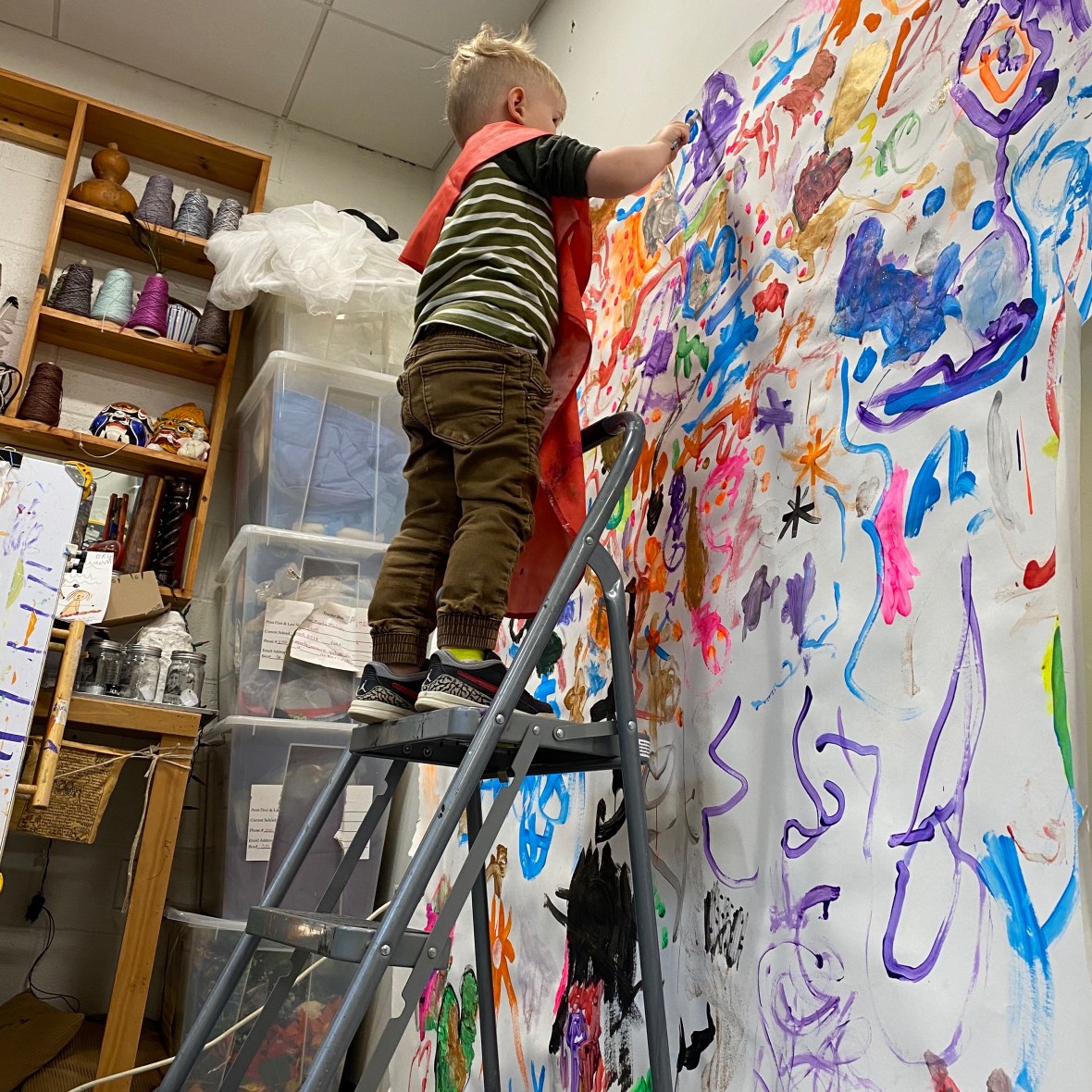
 Oscar ladder painting in his school’s art studio. I love these vivid shots!
Oscar ladder painting in his school’s art studio. I love these vivid shots!

 How many of you Maury Cougars remember these splatter paintings made by Maury 5th graders nearly a decade ago?
How many of you Maury Cougars remember these splatter paintings made by Maury 5th graders nearly a decade ago?
With your parents permission, come up with a fun new way to test out your art supplies. Toss paint across a canvas using sticks like Pollock, roll marbles through puddles of paint, use a body part other than your hands to apply paint, melt crayons, hammer old markers until they explode, toss Play-Doh at the walls, surprise me with your ideas and energy! If anyone can come up with something cool and new it’s YOU!
Remember to stay safe when making your artwork and experimenting with new materials and processes. Get your parents permission. Respect your tools and studio work spaces and DOCUMENT YOUR PROCESS so your art teacher can learn from YOU! Send your work to your class TEAMS page, email or txt me or tag me on Instagram.
Art is about pushing your imagination and passion to the limit! No great athlete or artist ever got where they are today without taking big risks, stretching out of their comfort zones, and dedicating time and energy to their work. Just don’t go too crazy in the process, I like you just how you are!
#StudioMaury on Instagram
Every blog you do is so beautiful and educational. Keep up the great work Lauren! Love, Dad
Miss you miss. Bomba. Anna Bibo
Sorry that was sorta by accident
love the videos and the assistant.